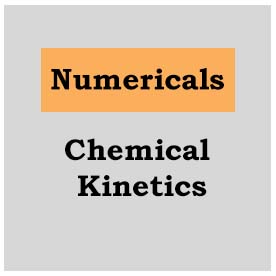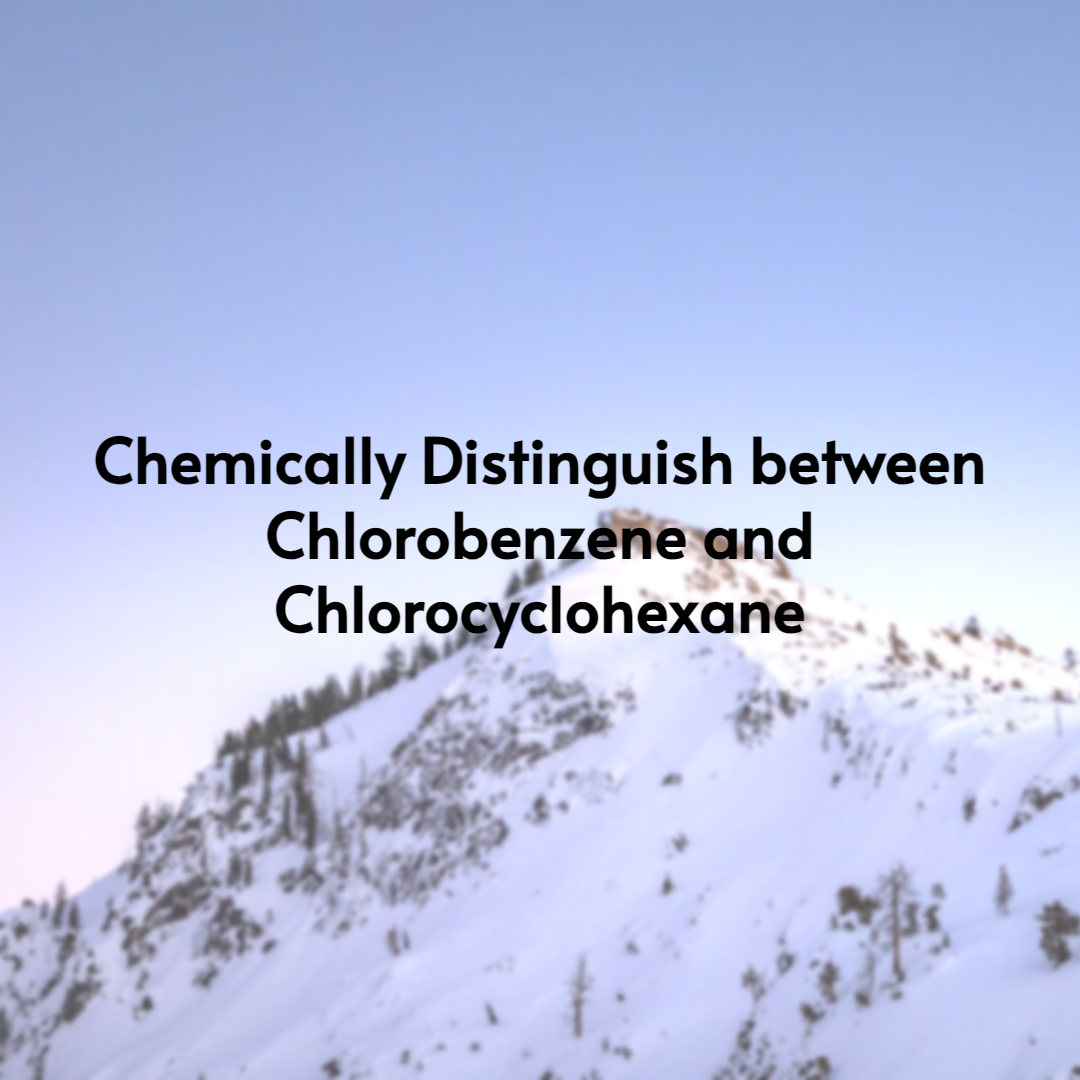Questions
1.Express the relationship between the rate of reaction, rate of disappearance of A and B, and the rate of appearance of A2B5 in the reaction 2A + 5B →A2B5.
2. Fluorine reacts with nitrogen dioxide with the formation of NO2F. 2NO2(g) + F2(g) → 2NO2F(g) . Express the rate of reaction in terms of (i) rate of formation of NO2F, (ii) rate of disappearance of NO2 (iii) rate of disappearance of F2.
3. Show that in case of a first-order reaction, the time required for 99.9% of the reaction to take place is about ten times than that required for half the reaction.
4.Find the two third life of a first order reaction in which k= 5.48 x 10-14 sec-1.
5. A first-order reaction has a specific rate constant of 10-3 sec-1. How much time will it take for 10g to reduce to half the quantity?
6. For a first-order reaction calculate the ratio between the time taken to complete three fourth of the reaction and the time taken to complete half of the reaction.
7. The rate constant for the first-order reaction is 5.78 x 10-5 s-1. What % of the initial reactants will react in ten hours?
8. For a first-order reaction it takes 5 min for the initial concentration of 0.6 mol/L to become 0.4 mol/L. How long in all will it take for the initial concentration to become 0.3 mol/L?
9. The three-fourth of a first-order reaction is completed in 32 min. What is the half-life period of the reaction?
10. The half-life of a first-order reaction is 2.31 x 103 min, how long will it take for 1/5 of the reactant to be left behind?
11. If 50% of a first-order reaction is completed in 20 minutes, calculate the time required to complete 90% of the reaction.
12. Show that for the first-order reaction the time required for 99% completion is two times, the time required for the completion of 90% of the reaction.
13.NO+Cl2 →NOCl
| [Cl2] | [NO] | Initial rate mol/Ls |
| 0.05 | 0.05 | 1 x 10-3 |
| 0.15 | 0.05 | 3 x 10-3 |
| 0.05 | 0.15 | 9 x 10-3 |
- What is the order w.r.t NO and Cl2 in the reaction?
- Write the rate expression.
- Calculate the rate constant.
- Determine the reaction rate when the concentration of Cl2 and NO are 0.2 M and 0.4 M respectively.
14.For the reaction 2P + Q2→2PQ, write the rate equation.
| Exp | [P] | [Q2] | Rate(mol/s) |
| 1 | 0.50 | 0.50 | 1.6 x 10-4 |
| 2 | 0.50 | 1.00 | 3.2 x 10-4 |
| 3 | 1.00 | 1.00 | 3.2 x 10-4 |
15.For the reaction A+B→Products
| [A] | [B] | Initial rate(mol/Ls) |
| 0.1 | 0.1 | 4.0 x 10-4 |
| 0.2 | 0.2 | 1.6 x 10-3 |
| 0.5 | 0.1 | 1.0 x 10-2 |
| 0.5 | 0.5 | 1.0 x 10-2 |
Write the rate equation.
16. What will be the initial rate of a reaction if its rate constant is 10-3 min-1 and the concentration of reactant is 0.2 mol/dm3. How much of the reactant will be converted into the products in 200 mins?
17. A substance having a half-life period of 30 mins decomposes according to the first-order rate law. A) What fraction of this will be decomposed and what will remain behind after 1.5 hours? B) How long will it take to be 60% decomposed, if its initial concentration is just doubled?
18. The rate of a particular reaction doubles when temperature changes from 270C to 370C. Calculate the energy of the activation of such a reaction.
19. The hydrogenation reaction is carried out at 500k. If the same reaction is carried out in the presence of a catalyst at the same rate, the temperature required is 400 K. Calculate the activation energy of the reaction if the catalyst lowers the activation energy by 20 kJ/mol.
20. In the Arrhenius equation for a certain reaction, the value of A and Ea are 4 x 1013 sec-1 and 98.6 kJ/mol respectively. If the reaction is of the first order, at what temperature will its half-life period be ten minutes?
21. The velocity constant for the decomposition of HI at 283 0C and 5080C are 3.517 x 10-7 and 3.954 x 10-2 respectively. A) Calculate the frequency factor at 2830C and B) Energy of activation of reaction.
22. The rate constant of a reaction is 1.5 x 107 s-1 at 50oC and 4.5 x 107 s-1 at 100oC. Evalute the Arrhenius parameters A and Ea.
23. Two reactions (I) A→Products (II) B→Products, follow the first-order kinetics. The rate of reaction (I) is doubled when the temperature is raised from 300 K to 310K. The half-life for the reaction at 310K is 30 min. At the same temperature, B decomposes twice as fast as A. If the energy of activation for the reaction (II) is half that of (I), calculate the rate constant of the reaction (II) at 300 K.
24. The rate constant of a reaction is 1.2 x 10-3 s-1 at 300C and 2.1 x 10-3s-1 at 40 0C. Calculate the energy of activation.
25. The rate of a reaction triples when temperature changes from 200 to 500C. Calculate the energy of activation for such a reaction.
26. At 3800C the half-life period for the first-order decomposition of H2O2 is 360 min. The energy of activation of the reaction is 200 kJ/mol. Calculate the time required for 75% decomposition at 4500C.
27. The rate constant of a reaction is 1.5 x 107 sec-1 at 500C and 4.5 x 107 sec-1 at 1000C. Evaluate A and Ea.
28. The time required for 10% completion of a first-order reaction at 298K is equal to that required for 25% completion at 308K. If the pre-exponential factor for the reaction is 3.56 x 109 s-1, calculate the rate constant at 318K and also the energy of activation.
29. At 653K the half-life for the first-order decomposition of H2O2 is 360 min. The activation energy of the reaction is 200000J. Calculate the time required for 75% decomposition at 723K.
30. For the reaction CH3Br + OH–→CH3OH + Br– the rate constant k1 is 5.03 x 10-2 mol-1sec-1 at 289K and k2 is 6.71 mol-1sec-1 at 333K. What is the activation energy of the above reaction? Calculate the rate constant at 305 K.[R=1.987cal]
Answer:
1) The rate of reaction = -∆[A]/2∆t = -∆[B]/5∆t = ∆[A2B5]/∆t
2) The rate of reaction= ½ ∆[ NO2F]/2∆t = – ½ ∆[NO2]∆t = -∆[F2]/∆t
4) 2 x 1013 sec
5) 693.2sec
6) 2
7) 87.5%
8) 8.545 min
9) 16 min
10) 5.36 x 103 min
11) 66.46 min
13) a) 1,2 b)K[NO]2[Cl2] c) 8 L2mol-2s-1 d)0.256 mol/Ls
14) r=k[Q2]
15)rate=k[A]2[B]0
16) 18.1 /min
17) A)0.874 B)39.67 min
18) 53.5986 kJ/mol
19) 100kJ/mol
20) 311.35 K
21) A)44898.74cal B) 8.9 x 1033
22) 22.01kJ/mol and 5.587 x 1014s-1
23) 3.26 x 10-2 min-1
24) 4.8 x 104
25)28.817 kJ/mol
26) 20.36min
27) 5.4363 x 1010 sec-1 and 22.01176kJ
28) 7.61 x 10-4s-1 and 76.728kJ/mol
29) 20.388 min
30) 21.2687cal and 3.55 mol-1sec-1










